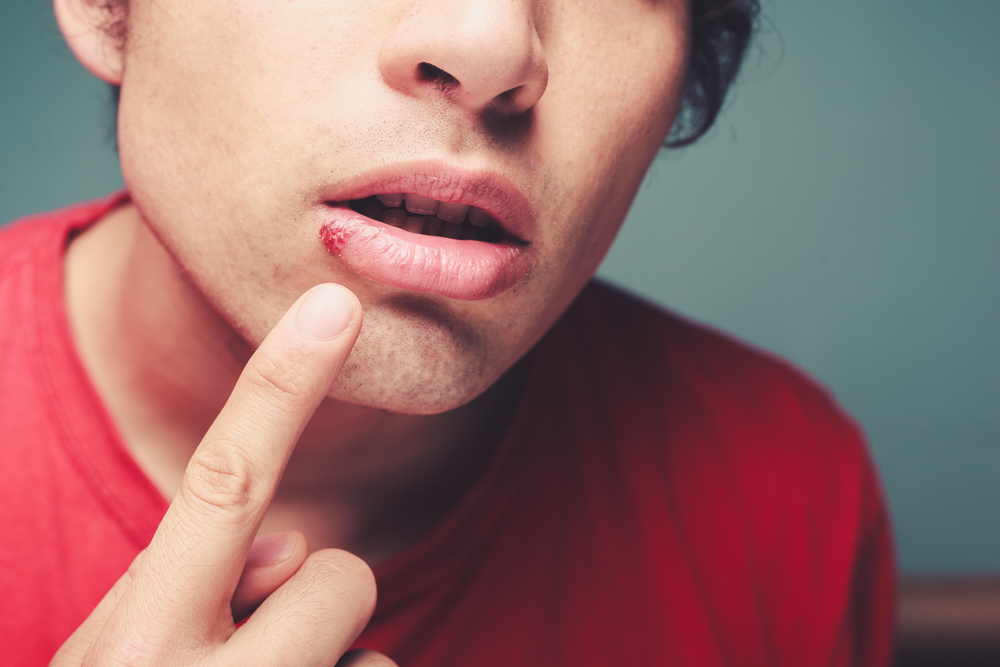
Mouth sores can be painful, annoying, and unsightly, depending on the type of sore you have. Some appear inside the mouth on the gums, tongue, lips, or cheeks. Others, like cold sores, can appear outside the mouth, such as on and around the lips, under the nose, and on the chin.
Mouth sores can be caused by bacterial, viral, or fungal infections, but they can also go undetected and be an indication of something more serious – oral cancer. For this reason, always have your dentist examine any mouth sore or spot that fails to heal within two weeks.
Canker Sores
Canker sores have the appearance of small white or yellow-shaped ulcers that can develop on the tongue, gums, or inside of the cheeks and lips. This type of mouth sore is typically accompanied by a burning or tingling sensation on and around the ulcer. Consuming certain foods, like citrus and acidic fruits, can increase pain or discomfort. Unlike cold sores, canker sores are not contagious and will only develop inside the mouth.
Treatment:
Any pain and discomfort from canker sores typically last one to two weeks. Over-the-counter pain medication can alleviate this type of discomfort while the sore heals. Utilizing a warm salt water rinse can shorten the healing process while also providing relief. Avoid spicy and citrus foods until the sore is fully healed.
Cold Sores (Fever Blisters or Herpes Simplex )
Fever blisters, herpes simplex, or cold sores are groups of painful, fluid-filled blisters around the lips and sometimes under the nose or around the chin. Cold sores are typically caused by a type of herpes virus, which is very contagious. Once a person is infected, the virus stays in the body, which is what causes recurrent outbreaks.
Treatment:
Cold sore blisters typically heal within a week. Because there is no cure for herpes infections, this type of mouth sore can reoccur during times of stress and emotion and from too much sun exposure.
Leukoplakia
Appearing like a thick, whitish-color patch on the inner cheek, gums, or tongue, leukoplakia is often associated with tobacco use. Smoking and smokeless tobacco are thought to be the top contributors; however, poorly fitting dentures, broken teeth, and chewing on one’s cheek are common causes. Leukoplakia often heals when a patient stops using tobacco, but if it does not, your dentist may take a biopsy. It is estimated that 5% of leukoplakia cases progress to oral cancer.
Treatment:
Most leukoplakia treatment plans start by removing the factors that are causing the lesions. For most patients, that means quitting tobacco use. For others, treatments can entail replacing ill-fitting dentures with ones that fit correctly.
Candidiasis (Oral Thrush)
Oral thrush, or candidiasis, is a fungal infection caused by a yeast, candida albicans. It can be identified by a creamy white appearance or red patches on moist surfaces in the mouth. Tissue found under the patch can be painful and sensitive. Thrush is most commonly seen amongst newborns, those who wear dentures, and people debilitated by disease or whose immune system is not functioning correctly. Patients who suffer from dry mouth or who have just completed antibiotics are also susceptible.
Treatment:
Oral thrush treatments typically focus on controlling the condition that is causing the outbreak. This includes reducing the dosage of antibiotics or oral contraceptives, finding remedies for dry mouth, improving oral hygiene habits, and cleaning dentures more thoroughly.
When To Seek Professional Help
See your dentist for any mouth sores that persist longer than two weeks, even if they are not painful. A biopsy can usually determine the cause or, at the least, rule out oral cancer. Always see your dentist if you notice any changes in your mouth, including pain and discomfort or the presence of sores in the mouth.
If you’re unsure whether your mouth sore is a harmless (but painful) canker sore or a sign of something more serious, contact Hoffman Dental Care today to schedule an exam.




